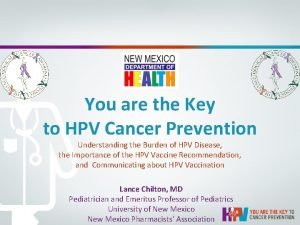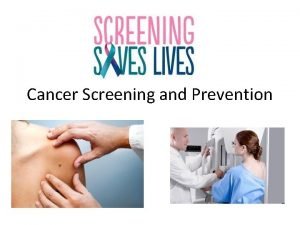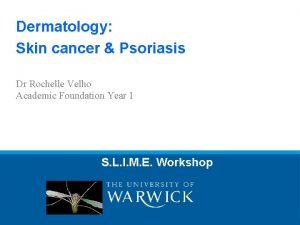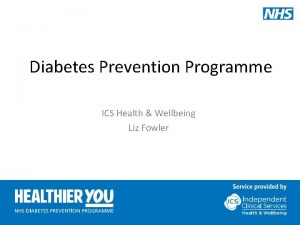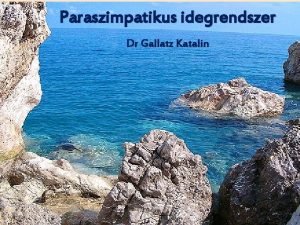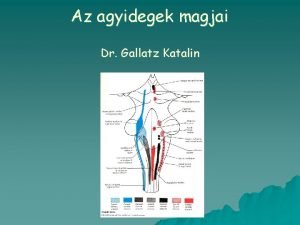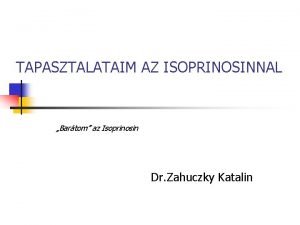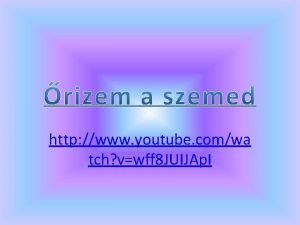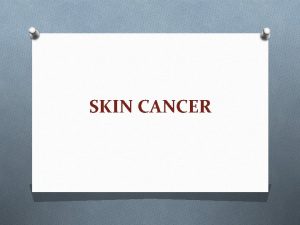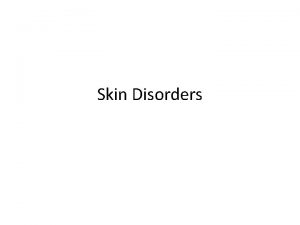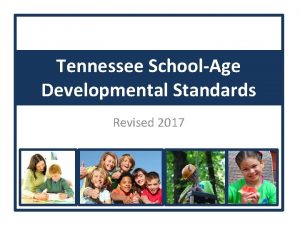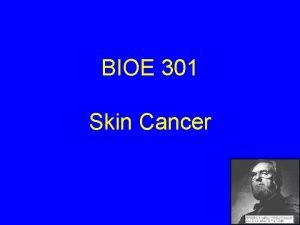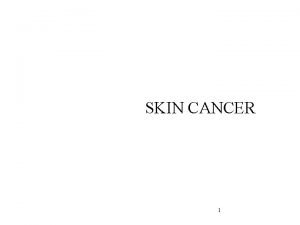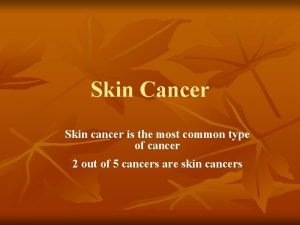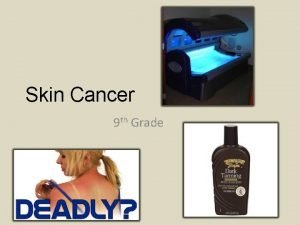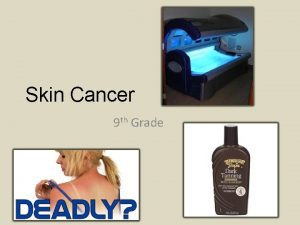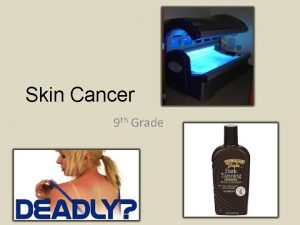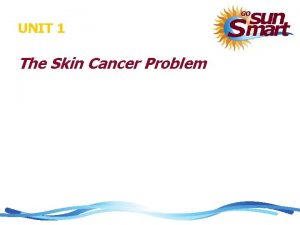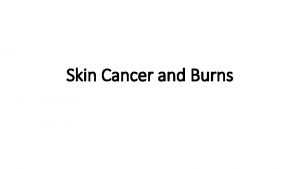Skin cancer prevention programme among schoolage children Katalin














- Slides: 14

Skin cancer prevention programme among school-age children Katalin Fehér 1, Beatrix Oroszi 1, Judit Paller 1, István Ember 2, Maria Cecilia Cercato 3 County Győr-Moson-Sopron, Institute of National Public Health and Medical Officer’s Service Győr, Hungary 2 University of Pécs, Medical Faculty, Medical Public Health Department Pécs, Hungary 3 Regina Elena Cancer Institute – I. F. O. Rome, Italy 1 CEE Chapter Meeting of ISEE 9 -11 June 2005

Mortality of melanoma malignum in Hungary (SMR, per 100 000 population) Incidence and mortality of melanoma malignum in Europe in 2002 (SIR, SMR per 100 000 population)

Risk factors of melanoma malignum phenotypical characteristics red or fair hair freckles and/or nevi blue, green, grey eyes fair skin environmental factors natural UV-exposure, sunburns genetic factors positive familiar anamnesis xeroderma pigmentosum artificial UV-exposure disorders of the immune system: AIDS, immunsupressive drugs, transplantation

Methods of prevention Primary prevention • wearing clothes and hats to protect skin, wearing sun glasses to protect eyes • using protective body and face cream • avoiding excessive use of solarium and sun-lamp • teaching „sun-safe” behaviour to children Secondary prevention • regular self-examination • dermatological screening

The programme It is focused on the primary prevention of melanoma malignum, among 6 -10 year old children. 1. Questionnaires are distributed to survey the known phenotypical, environmental and behavioural risk factors in primary schools. 2000 questionnaires were distributed in 9 primary schools in Győr city among 6 -10 year old children. 1330 (66, 5%) evaluable questionnaires were collected. 2. Evaluation is processed in Rome. The result of the processing is a list of the children’s names specifying school, class and the calculated sun-burn risk (high, medium, low). 3. We send a specific standard letter containing advise on the behaviour to minimise the harmful effects of sun exposure to each child.


Phenotypical characteristic 1. (0, 2%) (0, 5%) (1%) 9, 5% 32% 51%

Phenotypical characteristic 2. Have you freckles? To which of these pictures are you alike? 73. 2% 0. 2% 13. 9% 0. 2% Count the number of „ moles or nevi” you have on your left arm (from elbow to the wrist) 11. 8% 0. 9%

Sun protection 1. using protective body and face cream hat 2. wearing t-shirt 3. wearing

UV-exposure Where do you spend your holidays?

Distribution of risk category in Győr city in 2004 9, 5 % 60, 7 % 28, 4 % 1, 4 % Note: within the high risk group a very high risk goup is marked by the italian partner

International results Tunisia Italy Bulgary 2001 -2002 (3 625) 1997 -2003 (161 504) 2000 -2001 (2 210) Russia Belgium 2001 -2003 (1 245) 1999 -2001 (5 430) Spain 2000 -2004 (7 120)

Conclusions -An organised primary prevention programme could be proceeded based on this survey. Dermatologists and primary health nurses should be involved. The aim is to teach children sun-safe behaviour. -The identified high risk group should be screened by dermatologist with dermatoscope. The state could be recorded digitally. -By carrying out the survey on the same population after 2 -3 years we could evaluate the effectiveness of our intervention in changing their habits. - We can compair the results of different regions and countries. - We would like to spread the project in other cities and regions. In 2004 two regions in Hungary has already joined to this programme.

Thank you for your attention!
 Primary prevention secondary prevention tertiary prevention
Primary prevention secondary prevention tertiary prevention Hpv cancer prevention
Hpv cancer prevention Anatomy and physiology of psoriasis
Anatomy and physiology of psoriasis Abcd skin cancer
Abcd skin cancer Melanoma moles
Melanoma moles Ics diabetes
Ics diabetes Humectants milady
Humectants milady Thick or thin skin
Thick or thin skin Thin skin vs thick skin
Thin skin vs thick skin National programmes
National programmes Ggl. ciliare
Ggl. ciliare Gallatz katalin
Gallatz katalin Dr zahuczky katalin
Dr zahuczky katalin Gundel katalin
Gundel katalin Somatopleura splanchnopleura
Somatopleura splanchnopleura

